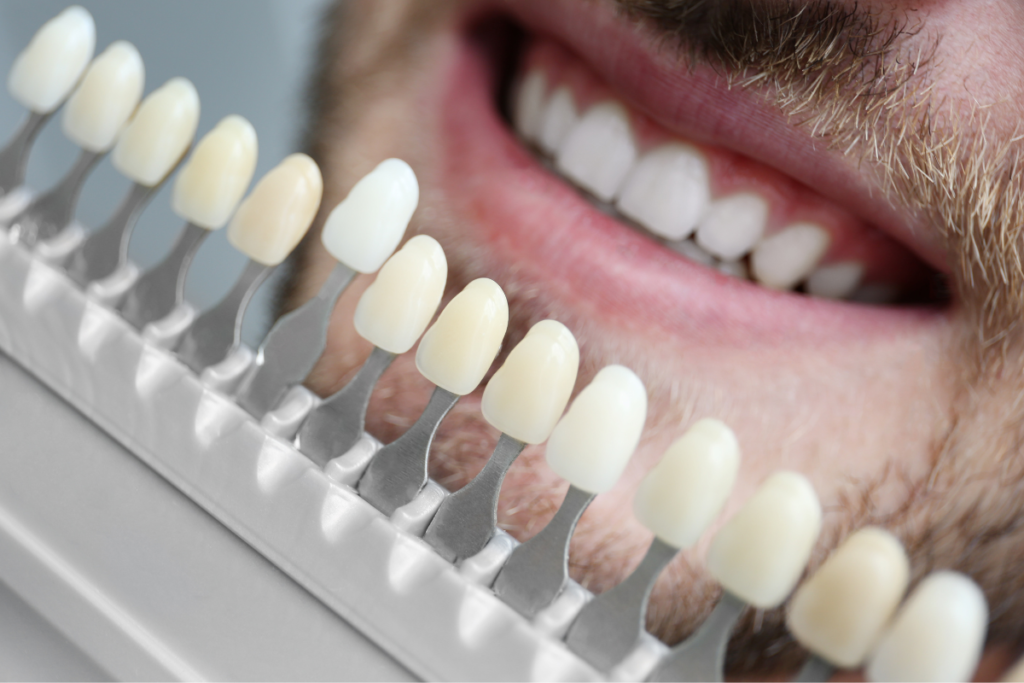Different Types Of Dental Veneers
Dental veneers are a popular cosmetic dentistry option to achieve beautiful teeth. There are different types of dental veneers, each with its advantages and disadvantages. This blog post will discuss different dental veneers and their uses. We’ll also discuss the costs and benefits of each type of veneer. So if you’re considering getting dental veneers, be sure to read this post! What Are Dental Veneers? Dentists use dental veneers to enhance the appearance of the teeth. Veneers are made of thin shells of ceramic or porcelain bonded to the front surface of the teeth. Veneers can be used to address several dental problems, such as gaps between teeth, misshapen teeth, damaged teeth, and discoloured teeth. It is a cosmetic and restorative dental procedure that gives teeth a brighter and more uniform appearance. Veneers are custom-made for each patient. They are made to give patients natural-looking, beautiful teeth. The placement of dental veneers is painless and easy. Your dentist can do it in as little as two dental visits. Dental veneer placement is a cosmetic procedure which means it requires proper maintenance. Once your veneers are in place, you will need to take good care of them, just like your natural teeth, practising good dental hygiene with regular brushing and flossing to prevent tooth decay. Veneers can last many years if they are well cared for. Common Types Of Dental Veneers There are three types of dental veneers commonly used today: porcelain, composite, and temporary. Porcelain Veneers Also called ceramic veneers, this type of veneer is made from thin sheets of ceramic material cut to fit over the front surface of the teeth. They are designed to be stain-resistant and have a natural appearance, making them a popular choice for people who want to improve their smiles. Composite Veneers Composite veneers are thin sheets of resin material bonded to the teeth. It is less expensive than porcelain veneers but not as durable. Composite veneers also discolour over time and may require more upkeep. Like porcelain veneers, its placement may take a minimum of two dental visits. Temporary Veneers Temporary veneers also called removable veneers or non-permanent veneers, are made from a plastic material placed over the teeth. They are less expensive than porcelain or composite veneers, but they are not as durable and may need to be replaced more often. These veneers are more commonly used as interim veneers, while the porcelain and composite veneers are fabricated in the laboratory. Ultimately, the type of veneer right for you will depend on your budget and personal aesthetic goals. The Pros And Cons Of The Different Types Of Veneers If you are considering getting veneers, it is important to weigh the advantages and disadvantages before deciding. The tables below give you a quick look at the pros and cons of each type of veneer. Porcelain Pros Cons Blend with natural tooth colour Lengthy procedure Resistant to stains Expensive Durable Invasive procedure Lower chances of breakage & fracture May cause tooth sensitivity Smoother, tooth-like texture Needs tooth reduction Doesn’t harm surrounding teeth & gums Typically lasts 10-15 years Little plaque build-up with proper oral care Composite Pros Cons Less invasive Easily stains over time Requires little enamel removal Less durable than porcelain veneers Less chance of harming gum tissue Doesn’t last as long as porcelain Easily repaired if broken & chipped May cause tooth sensitivity Lasts 5-7 years A more affordable option than porcelain veneers Temporary or Snap-On Veneers Pros Cons Convenient Do not look as natural Less expensive More prone to plaque build-up Provide instant results May harm gum tissue Not a long-term dental solution How To Choose The Veneers For You When choosing veneers, there are a few things you need to keep in mind. Cost Veneers can be expensive, so you should ensure you receive the best value for your money. If you’re willing to shell out money for long-lasting, more naturally-looking veneers, you may choose to have porcelain veneers. If you are looking for a more economical choice, composite veneers may be a better fit. It is less expensive than porcelain veneers, and they can be easier to repair when they become damaged. Material There are different types of veneer materials to choose from, each with its pros and cons. Porcelain is an excellent choice for veneers, as it is strong and durable. However, the composite veneers are less expensive. It is not as strong as porcelain veneers, but they are easier to repair if they become damaged. Purpose The type of veneer material you choose should also be based on the purpose of your veneer. There are different types of veneer materials that you can choose from depending on your needs. Porcelain and composite veneers are best for long-term use because they are more durable. If you want to use veneers for a special occasion only, then you may use temporary veneers. If you want it to be used for aesthetic purposes only, you can choose any veneer. But if you also want it to be functional, you may choose porcelain or composite veneers. Take the first steps toward your perfect smile today! Book An Appointment Or Call Us : (08) 6495 4004 Do Snap-On Veneers Work? Snap-on veneer is an alternative to traditional dental veneers. They are made from custom-crafted resin to fit over your existing teeth and can be removed and replaced as needed. They’re not bonded to the tooth. These temporary veneers are affordable and convenient for many people who want to improve their smiles instantly. They are an ideal solution for those who want to improve their smile without breaking the bank. Snap-on veneers are easily snapped on the teeth and can be removed and reapplied as needed. Due to the strength of the resin material used, snap-on veneers can last for two to five years. However, this may still vary depending on use and care. Proper placement and removal and proper diet are needed to ensure that Snap-on veneers can last long. Snap-on veneers can be



